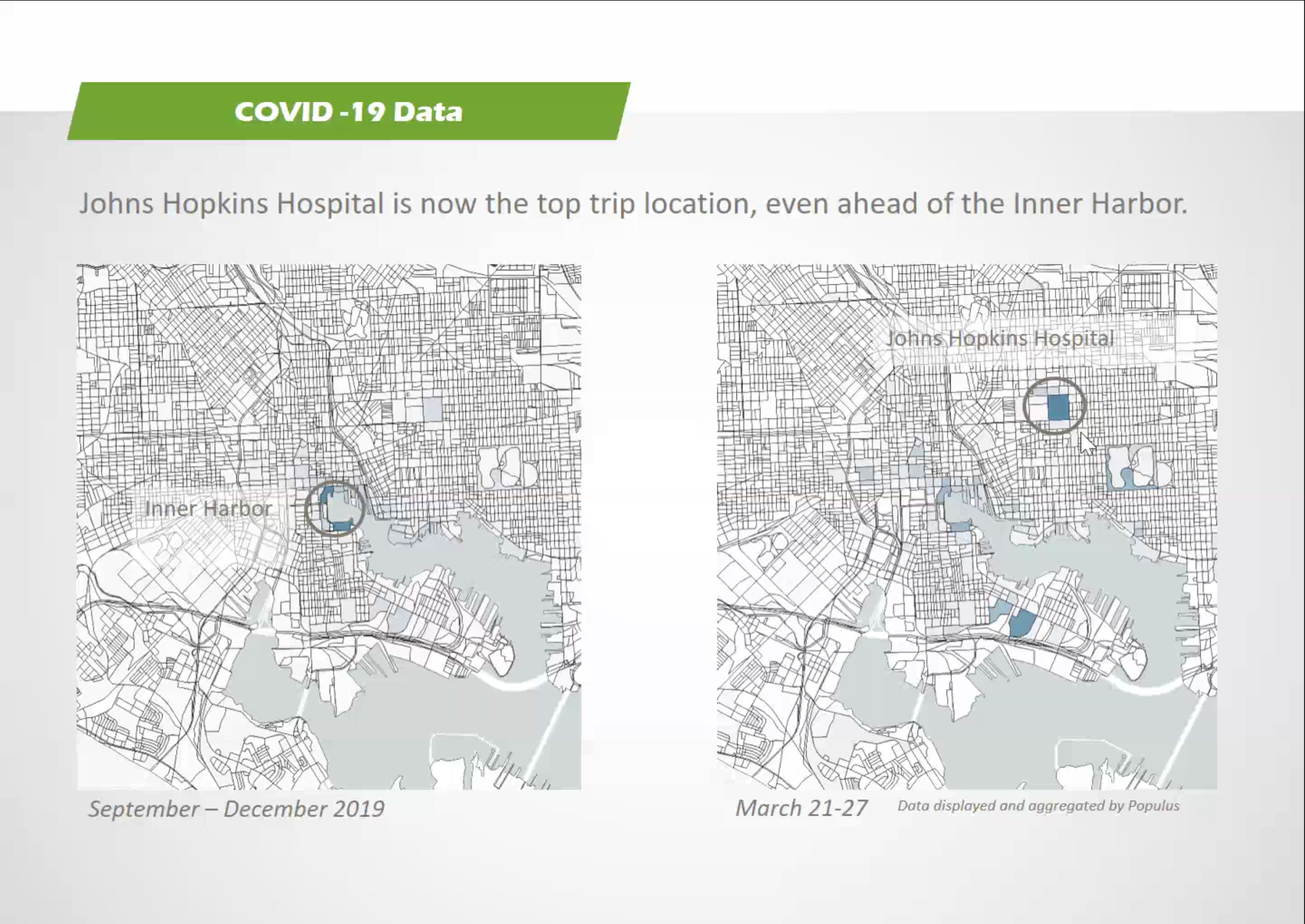What does scooter ridership look like during COVID-19 look like?
During this pandemic, access to reliable and safe transportation is becoming even more critical, both for our essential employees, and for those needing to access basic needs like food and health care.
Meg Young, the Shared Mobility Coordinator for DOT, recently updated us on what the scooter ridership data is showing — and it’s clear that scooters are providing needed transportation in Baltimore.
Image courtesy of BCDOT
The image above shows Johns Hopkins Hospital replacing the Inner Harbor as the top origin and destination for scooter trips.
Image courtesy of BCDOT
The top graph in the image above shows that when winter hit, fair weather riders dropped. But rides originating in the equity zones stayed steady or increased, demonstrating that riders in equity zones are using scooters as their primary commute option whereas others are often using them more as a choice.
The bottom graph in the image above shows that while choice ridership plummeted at the start of the COVID-19 response, ridership within the equity zones held firm or increased.
What are scooter companies doing to support essential workers?
While Lime has suspended their service in all markets, other companies are stepping up to support health care workers.
Jump and Spin have re-deployed scooters located in the usually popular downtown area to grocers, hospitals, and transit hubs.
Jump scooter rides are currently free for all employees of essential industries. Ask your HR rep for a Jump code to sign up with. And if they don’t already have the code, tell your HR rep in any essential business to fill out this form.
Spin is also providing free 30-minute rides to all health care professionals and hospital employees. You can find more details and sign up here.


